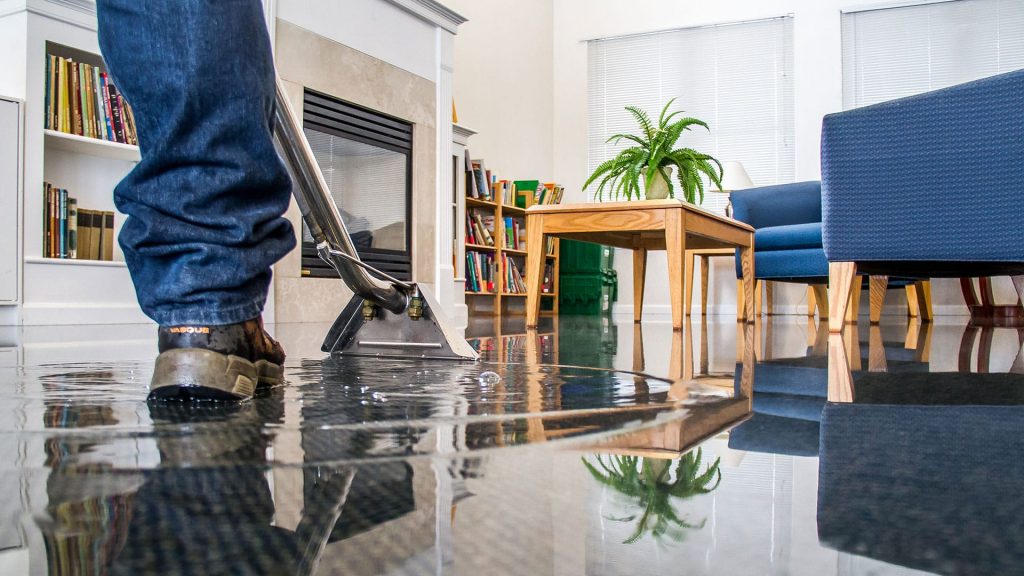Do's & Don'ts of Water Restoration.
Do's & Don'ts of Water Restoration.
Blog Article
They are making a few great points on Preventing Fires and Water Damage In Your Home in general in the content down below.

Water offers life, however water invasion on some components where it's not meant to be can lead to damages as well as inconvenience. It can peel off away the surface area as well as wear down the product's structure if the water permeates into your structure. Mold and mildew and mildew likewise flourish in a wet environment, which can be dangerous for your and your household's health and wellness. On top of that, residences with water damages scent musty and also old.
Water can come from many resources like hurricanes, floodings, ruptured pipelines, leakages, as well as sewer problems. If you have water damages, it's better to have a functioning understanding of safety and security preventative measures. Here are a few standards on how to manage water damages.
Do Prioritize Residence Insurance Policy Coverage
Seasonal water damage can come from floodings, seasonal rainfalls, and also wind. There is likewise an event of an unexpected flooding, whether it came from a malfunctioning pipeline that unexpectedly breaks into your residence. To protect your home, get house insurance coverage that covers both disasters such as natural tragedies, and emergencies like damaged plumbing.
Don't Neglect to Switch Off Utilities
When catastrophe strikes and you remain in a flood-prone location, turn off the primary electric circuit. Turning off the power protects against
electric shocks when water can be found in as water functions as a conductor. Don't fail to remember to shut off the main water line valve as a method to stop more damage.
Maintain your furniture stable as they can relocate around and cause extra damage if the floodwaters are obtaining high.
Do Stay Proactive as well as Heed Climate Alerts
If you live in a location plagued by floods, remain aggressive and also ready at all times. Listen to the information and also evacuation warnings if you live near a body of water like a creek, lake, or river .
Do Not Ignore the Roofing System
Your contractor must take treatment of the malfunctioning rain gutters or any other signs of damages or weakening. An assessment will protect against water from moving down your walls as well as soaking your ceiling.
Do Pay Attention to Tiny Leaks
A ruptured pipe does not happen in a vacuum cleaner or overnight. There are red flags that can attract your interest and suggest to you some damaged pipelines in your house. Signs of red flags in your pipes consist of gurgling paint, peeling off wallpaper, water touches, water discolorations, or dripping noises behind the wall surfaces. There are indicators that the pipeline will certainly burst. Don't wait for an escalation if you see these indicators. Repair work as well as check your plumbing fixed prior to it causes enormous damages to your residence, funds, and a personal nightmare.
Don't Panic in Case of a Burst Pipeline
Timing is crucial when it comes to water damage. If a pipe bursts in your home, immediately shut off your major water valve to cut off the source as well as avoid even more damage. Call a trustworthy water damages reconstruction expert for help.
Water offers life, however water invasion on some parts where it's not meant to be can result in damages and aggravation. In enhancement, residences with water damages scent old and also musty.
Seasonal water damages can come from floodings, seasonal rainfalls, and wind. Signs of red flags in your pipelines consist of gurgling paint, peeling off wallpaper, water streaks, water stains, or dripping noises behind the walls. If a pipe ruptureds in your residence, right away closed off your major water shutoff to cut off the source as well as stop even more damages.
Some Do's & Don't When Dealing with a Water Damage
DO:
Make sure the water source has been eliminated. Contact a plumber if needed. Turn off circuit breakers supplying electricity to wet areas and unplug any electronics that are on wet carpet or surfaces Remove small furniture items Remove as much excess water as possible by mopping or blotting; Use WHITE towels to blot wet carpeting Wipe water from wooden furniture after removing anything on it Remove and prop up wet upholstery cushions for even drying (check for any bleeding) Pin up curtains or furniture skirts if needed Place aluminum foil, saucers or wood blocks between furniture legs and wet carpet Turn on air conditioning for maximum drying in winter and open windows in the summer Open any drawers and cabinets affected for complete drying but do not force them open Remove any valuable art objects or paintings to a safe, dry place Open any suitcases or luggage that may have been affected to dry, preferably in sunlight Hang any fur or leather goods to dry at room temperature Punch small holes in sagging ceilings to relieve trapped water (don't forget to place pans beneath!); however, if the ceiling is sagging extremely low, stay out of the room and we'll take care of it DO NOT:
Leave wet fabrics in place; dry them as soon as possible Leave books, magazines or any other colored items on wet carpets or floor Use your household vacuum to remove water Use TV's or other electronics/appliances while standing on wet carpets or floors; especially not on wet concrete floors Turn on ceiling fixtures if the ceiling is wet Turn your heat up, unless instructed otherwise

Do you really like more info about Reducing Your Risk Of Water And Fire Damage At Home? Place a remark down below. We would be interested to listen to your opinion about this write up. In hopes to see you back again soon. Make sure you take a moment to distribute this entry if you enjoyed it. Many thanks for going through it.
Report this page